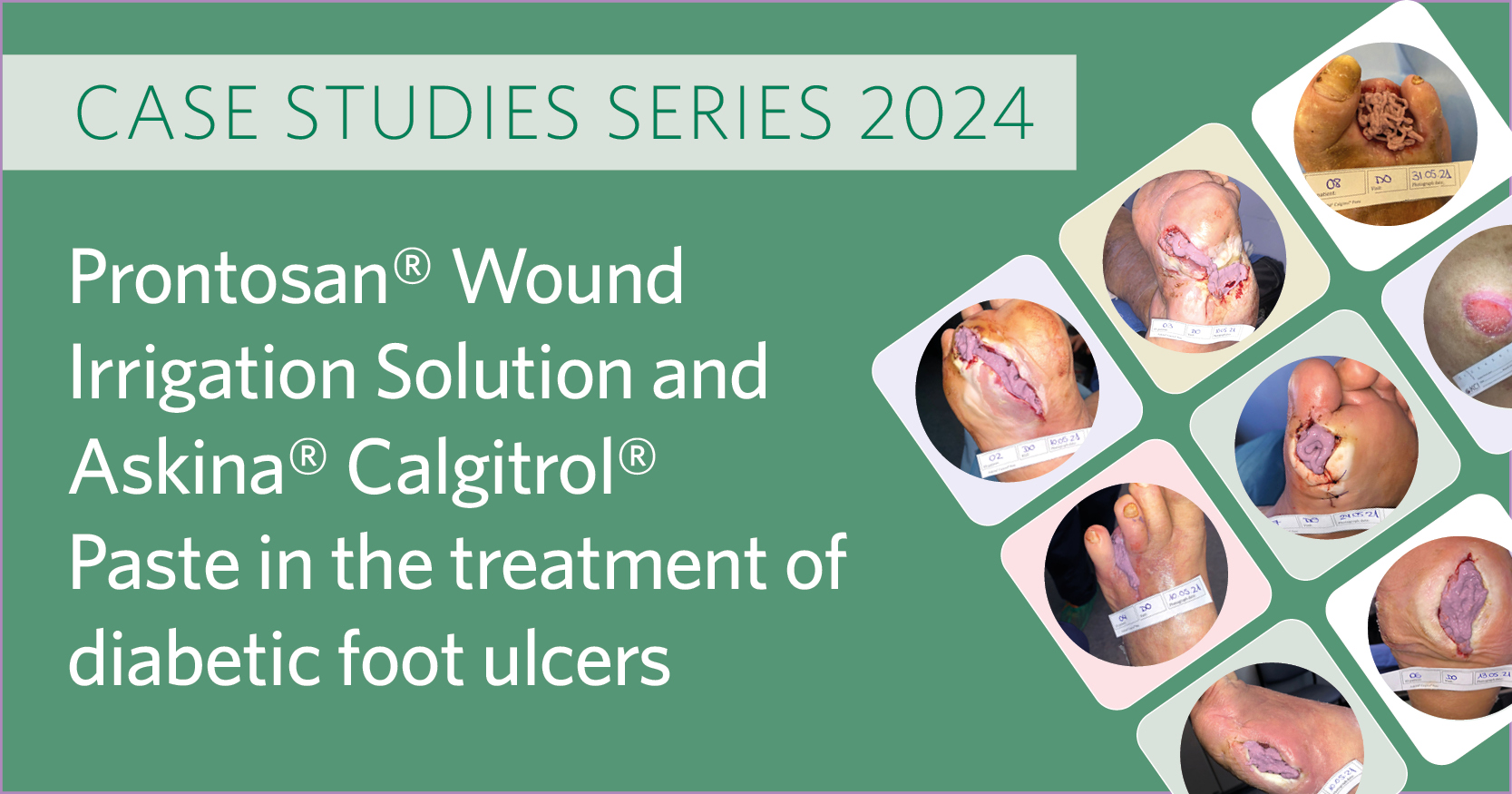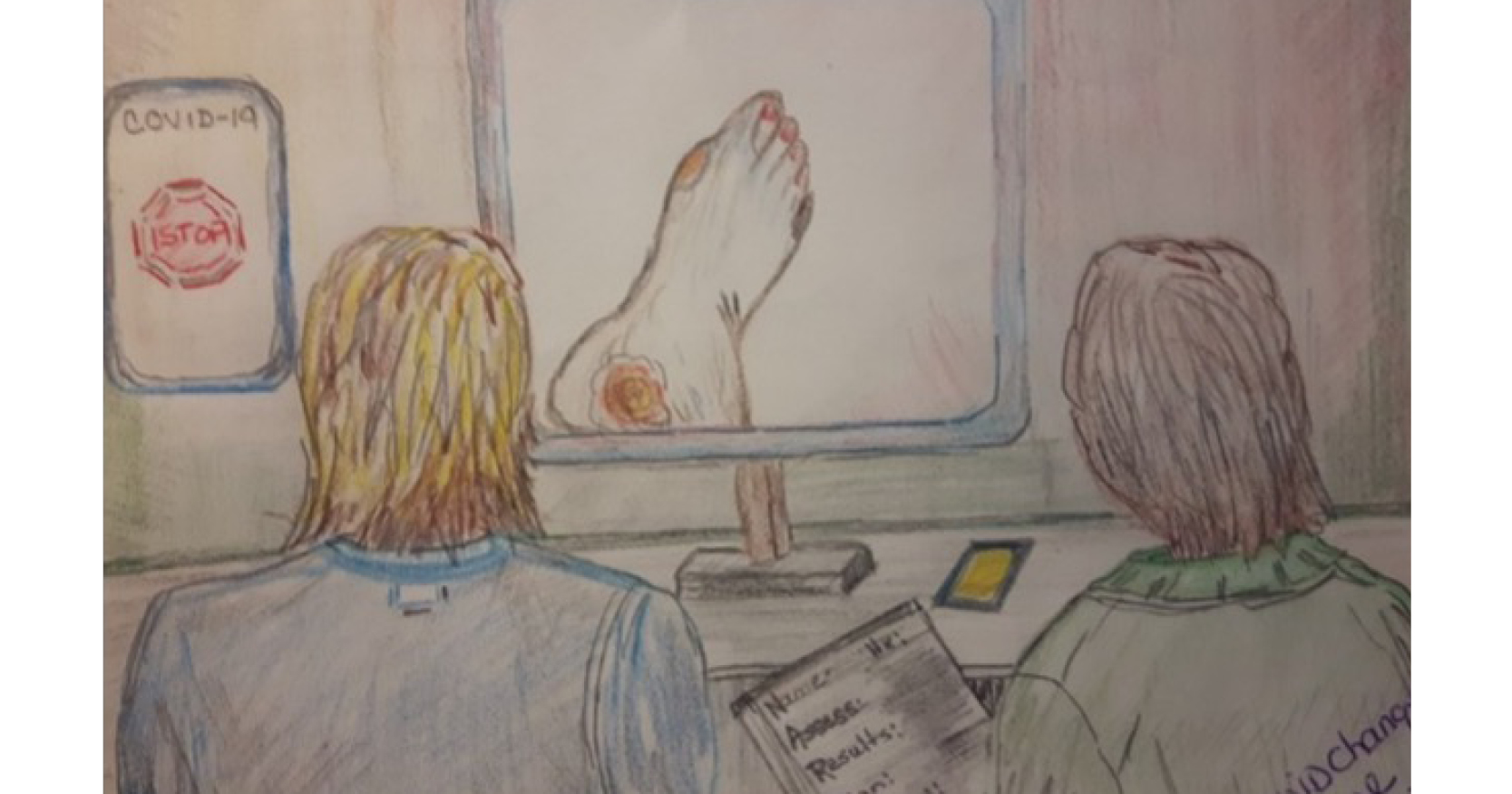Nurses globally are facing pressures that severely impact their ability to carry out their vital role (Barrett and Heale, 2021; Castro-Ayala et al, 2022; World Health Organization [WHO], 2022). With the prevalence of chronic wounds rising by 71% since 2012, we are currently facing a crisis and new ways of working are required to meet the challenge of chronic wound management for both patients and individual practitioners (Sen, 2019).
Innovation accelerated during the pandemic in an effort to make healthcare services more resilient, effective and efficient. However, greater focus is now needed to ensure these new pathways, technologies and protocols continue to be implemented to maximum effect, especially when we consider the prediction by WHO that by 2030, the nursing shortage globally could be as high as 5.9 million (WHO, 2020; Queen and Harding, 2021).
A recent review identified three main areas of stress that nursing staff experience (Broetje et al, 2020):
- Work overload: time constraints, staffing issues and high workloads
- Lack of formal reward: pay, growth and development opportunities and effort-reward imbalance
- Work-life interference: unsocial hours and stressful or traumatic work environments.
As well as factors that put pressure on all nursing staff, there are compounding factors for specialist wound care nurses. Pressures include increasing costs of management, an ageing population, increased prevalence of co-morbidities and growing antimicrobial resistance (Sen, 2019; Guest, 2021).
There has also been a marked shift towards community nursing; in some markets, there has been a 399% increase in community nurse visits between 2012 and 2018, while specialist nurse visits decreased over the same period (Guest et al, 2020). As non-specialist community nurses now take a more active role in wound care, managing practice variation will become increasingly important (Guest, 2021).
Studies (Moore et al, 2021; Tayyib and Ramaiah, 2021; Blackburn and Ousey, 2022) have identified areas where nurses feel there is room to improve the management of wounds, including:
- Higher patient involvement in wound management
- Staff education
- Dressing selections and dressing change frequency
- Multidisciplinary coordination
- Holistic approach to care, which encompasses wider aspects of the patient’s health, not just their wound.
These areas for improvement can be addressed through the implementation of shared care practices. Shared wound care encompasses practice interventions that facilitate interested and capable patients taking a more active role in care planning and delivery.
Shared care practices are not a new concept and are already implemented to great effect in diabetes, incontinence and stoma management (Ketterer et al, 2021; Pizzol et al, 2021; University of Southern California, 2021). In wound care, shared care has been found to improve patient engagement, personalise dressing change schedules and support a holistic view to patient care (Wounds International, 2022).
Furthermore, the shared wound care approach combined with the use of long-wear advanced foam dressings has been estimated to release up to 3.5 billion nursing hours globally by 2030, achieved primarily through reductions in unnecessary dressing changes and a reduction in patient visits (Moore et al, 2021; Moore et al, 2022).
Despite the many benefits of shared wound care, there are a multitude of challenges facing those wishing to implement new protocols (Grothier, 2018).
This article aims to support clinicians to begin conversations about the implementation of shared wound care and overcoming common challenges or barriers (Moore et al, 2021).
Shared wound care: in practice
Implementing new ways of working can be done informally at first, often through conversations with patients during typical care activities to educate or engage. To standardise, however, more formal protocols are needed with the support of the healthcare system and change of practice champions to drive change and record outcomes.
With protocol or behaviour change programmes, common challenges centre around the following (Grothier, 2018):
- Lack of cost benefits: additional expenses and resources caused by new ways of working and the individual nurse’s capacity
- Accessibility: inability to attend training and educational initiatives due to time pressure and staffing issue
- Clinical effectiveness: patient suitability, informal support from family members and research access may be limited
- Scalability: the available resources for implementation and the sharing of best practice
- Ease of implementation: need for stakeholder engagement and poor communication which can lead to reduced confidence in practice.
Shared wound care can be implemented with minimal practice disruption and reassurance provided around each of these cited challenges or barriers. Using long-wear advanced foam dressings can aid nurses and patients practicing shared wound care. But, it should be noted that long-wear advanced foam dressings are not vital for the practice, and shared wound care can be implemented using other dressing types.
Cost and resource benefits
The benefits of shared wound care are multi-faceted. Patient empowerment benefits can be seen across physical, mental and financial health. The 3.5-billion-hour time release model demonstrates the cost benefit to the global nursing profession (Moore et al, 2022). On the other hand, for individual practitioners, shared wound care has the potential to benefit daily working practice.
Community nurses have identified several benefits that shared wound care could bring to their working lives (Moore and Coggins, 2021):
- Timing: clinicians can spend more time with patients that have more complex needs
- Cost: fewer visits and fewer dressing changes result in reduced costs for care providers
- Relationship: patients that engage with their wound management have a better relationship with their clinician
- Reporting: patients that have a good understanding of their wounds provide better reporting information, which supports clinical decision making.
Time has been identified as one of the biggest constraints on clinicians, and one of the primary benefits of shared wound care is time release (Moore et al, 2021; Moore et al, 2022)*. Shared wound care when implemented alongside long-wear foam dressings, has the potential to save up to 3.5 billion hours globally by 2030 (Moore et al, 2022). What does this mean, however, to an individual starting a conversation with stakeholders about implementing shared care at a practice level? It means a potential 10% reduction in community nursing time spent changing dressings (Moore et al, 2022).
This time, currently dedicated to potentially unnecessary dressing changes or home visits, will allow nurses to optimise the time they have with patients with chronic wounds, wherever they sit on the shared care continuum.
For patients ready to embrace shared wound care, this approach allows their nurse to prioritise higher value tasks than dressing changes and provide more holistic care, for example spending more time treating co-morbidities or managing other issues related to chronic wounds that affect a patient’s quality of life. If appropriate, it could also reduce the number or duration of visits, to allow the nurse to spend more time with patients that are not able or willing to participate in shared wound care, have more complex care needs and require a more hands-on approach (Smith+Nephew, 2016c; Moore et al, 2021).
While the implementation of shared wound care does not reduce a nurse’s workload, improve remuneration, or improve work-life balance, it does allow a nurse to personalise wound care based on patient needs, which means an optimised use of finite nursing time (Moore et al, 2021).
Accessibility
Incremental efficiencies can be achieved by community and wound specialist nurses but implementing this can seem a daunting task when considering all aspects of shared wound care. This practice change, however, is more accessible than it may seem at first glance. Sixty percent of patients with chronic wounds already have some active role within their care, meaning that a proportion of patients will already be aware of some shared care practices as part of their standard care program (Moore et al, 2021).
Shared care is a continuum, meaning patients can become more or less involved in their care over time as their circumstances change. This means clinicians do not need to spend unnecessary time trying to fully involve a patient if they do not meet the criteria and regardless of a patient’s capability they can fit somewhere on the shared care continuum (Moore et al, 2021; Wounds International, 2022).
A change in practice would not require additional qualifications, significant training or resources as it is nurse-led and much of the infrastructure, such as access to telehealth and reporting methods, are already in place as part of standard practices (Koonin et al, 2020; Mahoney, 2020; Moore and Coggins, 2021).
There are many tools available to aid clinicians in both the implementation and ongoing management of shared wound care:
The T.I.M.E clinical decision support tool (CDST) [Figure 1] is a tool which aids clinicians to assess, treat and manage chronic wounds (Moore et al, 2019)
The Shared Wound Care Discussion Guide (SWCDG) [Figure 2] is a tool used to discuss aspects of shared wound care with patients and informal carers, giving practitioners a better understanding of patient suitability (Moore et al, 2021)
A Case Series illustrates types of cases that are applicable to shared wound care and where those cases sit on the care continuum (Wounds International, 2022).
These tools address several of the barriers to implementing evidence-based practice as identified by nurses, allow for personalisation of best practice to align with local requirements, and enhances patient, practitioner and healthcare provider discussions (Moore et al, 2019; Moore et al, 2021).
Clinically effective
As a new way of working, there are some limits to the evidence for shared wound care in clinical practice, especially around healing parameters such as wound size, wound bed condition and wound progression. However, qualitative data collected from patients and practitioners over a 4-week period and across five countries, suggests shared wound care enhanced the experience of wound healing (Wounds International, 2022).
This recent case series illustrates how practitioners and patients of varying capacity all benefited from a shared wound care approach. Patients and practitioners reported that they experienced: a decrease in patient visits, regular communication between patient and clinician, increased patient confidence and independence (Wounds International, 2022).
The more quickly and effectively a wound heals, the less chance there is of further complications such as infection occurring during the healing process. This poses issues with chronic non-healing wounds as they are inherently slow to heal (Guo and DiPietro, 2010). Shared wound care practices when used in conjunction with ALLEVYN LIFE foam dressings can help undisturbed healing and efficiency (Chewning et al, 2012; Smith+Nephew, 2012, 2016a, 2016d, 2018b; Moore et al, 2021; Wounds International, 2022).
Patient selection and effective communication between the clinician and patient are important for clinically effective wound management. The tools discussed above ensure that effective communication and patient selection can be achieved within a shared wound care practice (Moore et al, 2019; Wounds International, 2022). The tools allow for clinicians to select the suitable patients with the suitable wounds for full involvement in shared wound care, as well as identifying patients that can’t or don’t want to be involved in shared wound care.
Longer wear approaches require clinicians and clinically appropriate patients to leave their dressings on for longer to facilitate undisturbed healing, which is a key aspect of why shared wound care is an effective practice**. Undisturbed healing has been shown to be a beneficial practice in the treatment of acute wounds and non-healing wounds when practiced with long-wear advanced foam dressings, such as ALLEVYN LIFE (Stephen-Haynes, 2015).
Some of the major reasons for premature dressing changes are due to the dressing itself (i.e. dressing has moved, dressing smells, guidance from dressing manufacturer [Figure 3]. This can lead to reduced trust in dressings and more frequent dressing changes.
Shared wound care, when used alongside appropriate advanced foam dressings, can be an effective practice that offers clinical confidence to patients, practitioners and healthcare systems (Grothier, 2018).
Scalability
Shared wound care is a scalable strategy that can be tailored to the specific healthcare system in which it is implemented. Clinicians are already practicing shared wound care as 60% of patients already take an active role in their treatment. Specific steps can be taken to scale shared care approaches with more patients, more formally and with less practice variation (Moore et al, 2021).
The nature of shared wound care makes it suited to a phased rollout, with initial implementation carried out using a small cohort of patients that are most suitable for shared wound care (Moore et al, 2021). Not all patients need to be engaged in shared wound care right away, only the most clinically appropriate. This gives clinicians the ability to implement the practice at a pace that suits them and the demands of their practice.
As implementation progresses, practitioners will have more time to invest in scaling up shared care practices, and identifying, training and engaging new patients. A phased approach will have a cumulative effect on the time released, as more patients are enrolled onto a shared wound care pathway, more time will be released to nurses to enrol more patients. Alternatively, clinicians can dedicate more time to patients who are not able or don’t want to be involved in shared wound care and require more hands-on care (Moore et al, 2021).
Other care areas such as diabetes management have utilised a shared care approach to improve quality of life for patients. Reports by stakeholder groups have highlighted areas that should be of focus when implementing shared care programs, areas such as care planning, clinical engagement and leadership, and clinical governance (Diabetes UK, 2014). By learning from experiences in other therapy areas, wound care specialists can streamline their implementation efforts, increasing scalability and the speed of uptake.
Implementation
Shared wound care is welcomed by many patients and practitioners and is a proven way to streamline wound management and improve clinical outcomes. However, there are still barriers to implementation which need to be addressed. While discussions about becoming involved in shared care can take place between practitioners and patients without involvement from all relevant stakeholders, implementing a formalised change of practice can be difficult.
This has been shown in the implementation of local diabetes shared care programs where involvement from senior hospital managers (e.g. chief executive officers), specialist clinical leads, community nurses, care commissioners, patient groups and disease specific charities were required to set up effective shared care pathways (Diabetes UK, 2014). This is a broad stakeholder group so effective engagement with all parties is required for effective implementation of shared wound care. Box 1 shows the steps that should be taken when implementing a change of practice within a healthcare system and can be used to aid implementation of shared wound care within a healthcare organisation.
Experiences from stoma management can teach us a lot about how training, resourcing and product availability can be barriers to shared care. In the UK, Rotherham Clinical Commissioning Group found that patients were housebound due to poor continence equipment, patients had to modify their equipment and patients received equipment they did not need (Di Gesaro, 2012; NHS, 2021). This highlights the need for training, adequate resourcing, access to correct equipment and a robust and comprehensive business case to successfully implement shared wound care.
Conclusion
Shared care is a natural progression in chronic wound management, it is well evidenced in practice in the management of other chronic conditions and evidence in wound care is growing rapidly (Diabetes UK, 2014; Ketterer et al, 2021; NHS, 2021; Pizzol et al, 2021; Wounds International, 2022). Implementation of this practice can release a significant amount of time for every nurse that treats chronic wounds as well as improving outcomes by engaging patients in their own care and focusing more time on patients that can’t. The time released can be optimised by each nurse depending on the demands and priorities of their role.
Practitioners can take steps now to begin implementing shared wound care and tools are available to assist pilot programs. Practitioners can start assessing where patients may sit on the shared care continuum using tools such as the T.I.M.E CDST [Figure 1], SWCDG [Figure 2], shared care case series and the international best practice guidelines (Moore et al, 2016, 2019, 2021; Wounds International, 2022). Starting with discussions with management, whether that is clinical leads or executive level management, is another way practitioners can begin the process. The last step practitioners can take is identifying a change of practice champion that can help drive change within their healthcare organisation.
The next article in the series will focus on implementing change of practice at an organisational level, aiming to aid practitioners to engage payors and higher-level management to implement shared wound care practices. Implementing shared wound care will be an incremental process but investment of the required time and resources promises to yield real improvements for practitioners, patients and healthcare providers in the management of chronic wounds.







